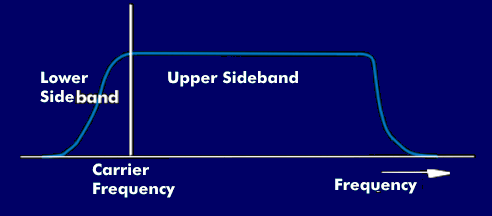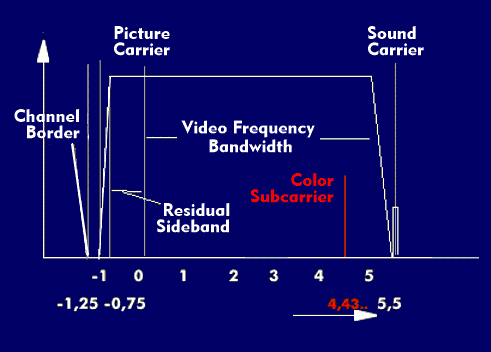vestigial sideband (VSB)
The residual sideband modulation is a modulation method in which one sideband is modulated with the full bandwidth, while the other sideband is transmitted with a greatly reduced bandwidth.
Like single-sideband transmission, the residual sideband method serves to make more efficient use of the available frequency range. With this method, low transmission frequencies are transmitted more efficiently than with pure single-sideband modulation, since the lower frequencies are only transmitted with a high degree of attenuation.
The ATSC has specified vestigial sideband(VSB) for digital terrestrial broadcasting ( DVB-T), namely version 8-VSB. This method uses eight phases, which are encoded with three bits and finally reduced to two bits. The resulting payloaddata rate is 19.28 Mbit/s for a 6 MHz frequency band.
For transmission over cable distribution networks and for data-only applications, the Advanced Television Systems Committee ( ATSC) standard provides for 16-VSB.
Vestigial sideband is also used in optical networks with wavelength division multiplexing(WDM) for better utilization of wavelengths.


